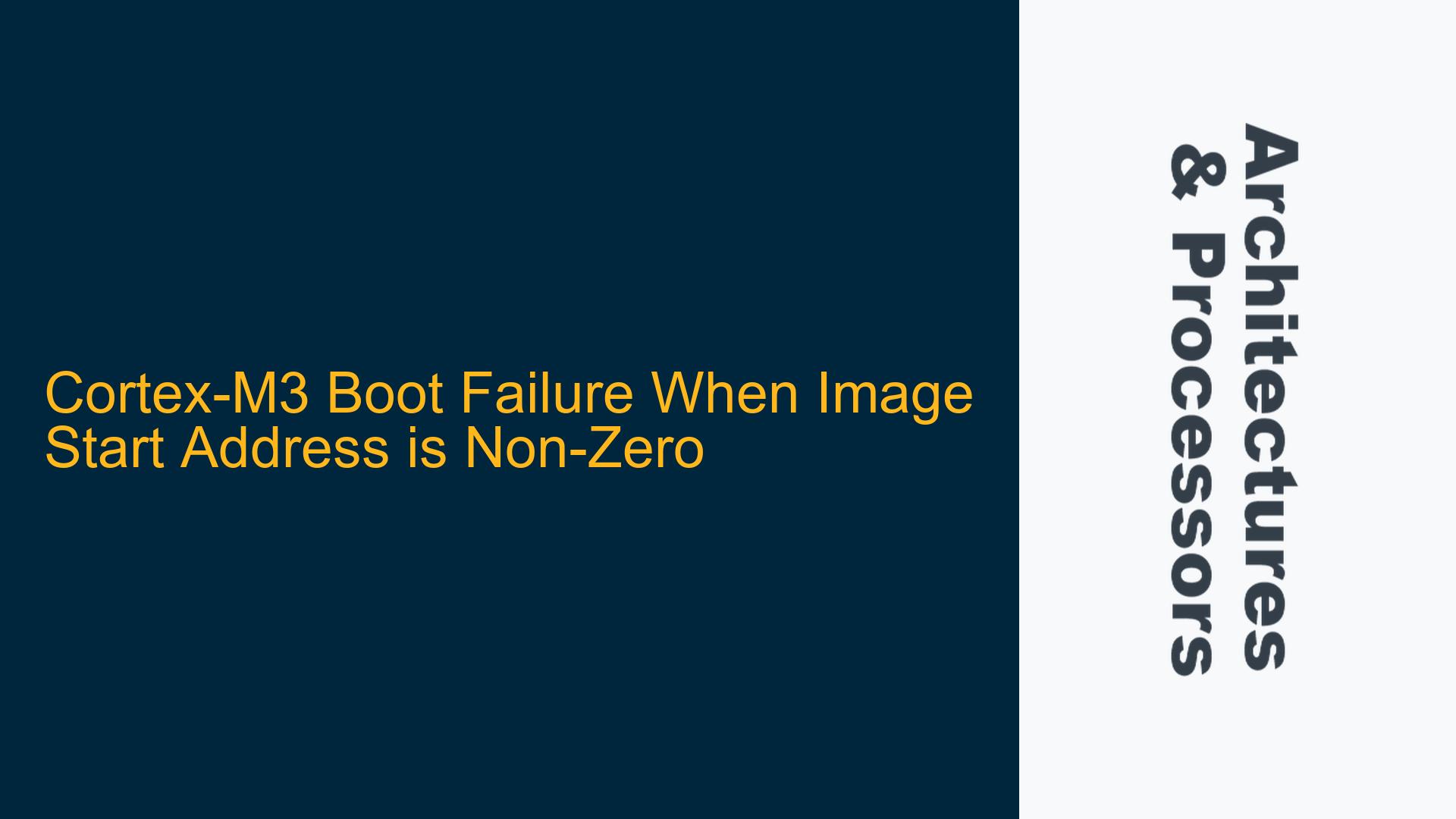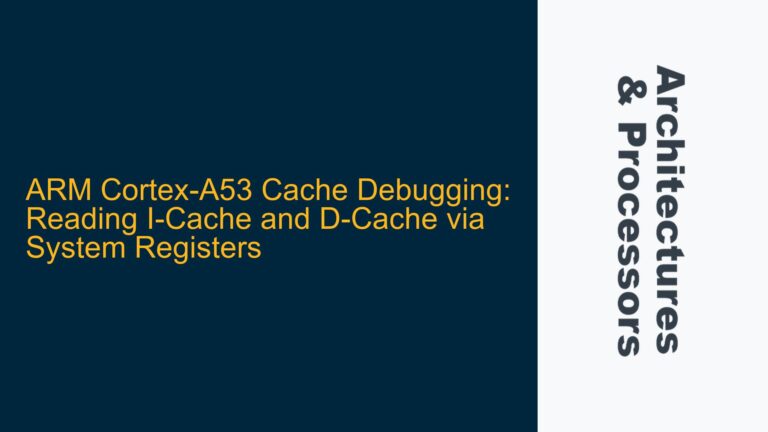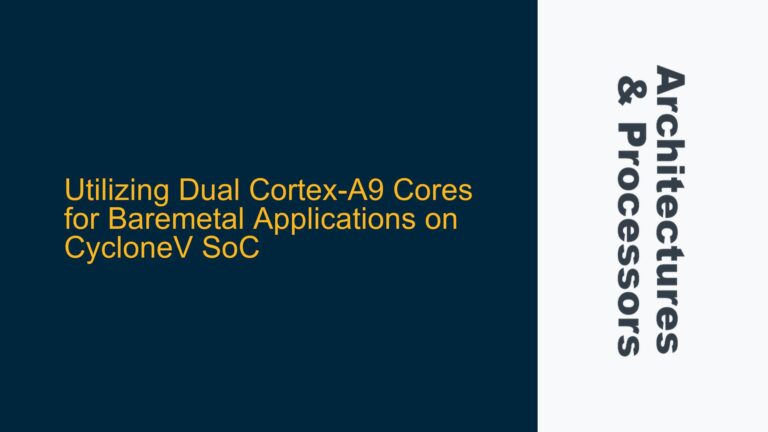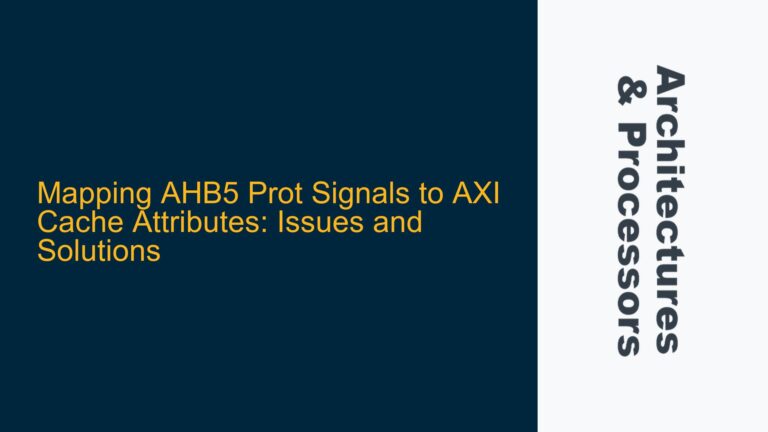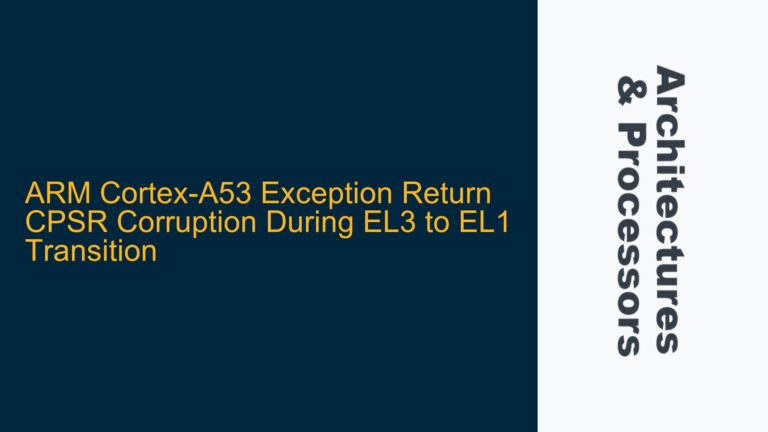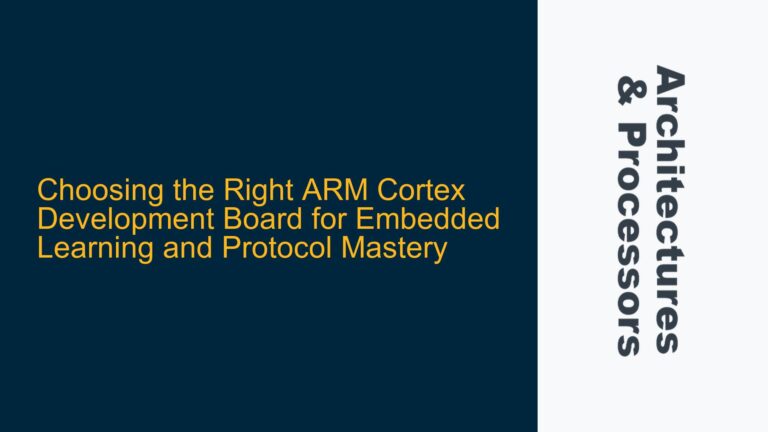Cortex-M3 Boot Process and Memory Mapping Constraints
The Cortex-M3 processor, like many embedded systems, relies on a specific memory map to function correctly. The boot process begins with the processor fetching the initial stack pointer and reset vector from specific memory addresses. By default, these addresses are located at the beginning of the memory map (0x00000000 for the stack pointer and 0x00000004 for the reset vector). This design ensures that the processor knows where to start executing code after a reset.
When the image start address is changed to a non-zero value, such as 0x40000000, the processor may fail to boot if the memory map and boot process are not properly configured. This is because the Cortex-M3 expects the initial stack pointer and reset vector to be at the default addresses unless explicitly told otherwise. If these critical pieces of information are not found at the expected locations, the processor will not know where to start executing code, leading to a boot failure.
The memory map of the Cortex-M3 is divided into several regions, each with specific purposes. The Code region (0x00000000 to 0x1FFFFFFF) is typically where the initial stack pointer and reset vector are located. The SRAM region (0x20000000 to 0x3FFFFFFF) is used for data storage, and the Peripheral region (0x40000000 to 0x5FFFFFFF) is for accessing peripherals. When the image start address is set to 0x40000000, it falls within the Peripheral region, which is not typically used for code execution.
To ensure proper booting, the linker script and startup code must be configured to place the initial stack pointer and reset vector at the correct addresses. This involves modifying the linker script to specify the new memory regions and ensuring that the startup code correctly initializes the stack pointer and jumps to the reset vector.
Linker Script Configuration and Startup Code Initialization
The linker script plays a crucial role in determining where different sections of the code and data are placed in memory. When the image start address is changed, the linker script must be updated to reflect the new memory layout. This includes specifying the new start address for the code section and ensuring that the initial stack pointer and reset vector are placed at the correct locations.
In the case of the Cortex-M3, the initial stack pointer is typically placed at the beginning of the SRAM region (0x20000000), and the reset vector is placed at the beginning of the Code region (0x00000000). However, when the image start address is changed to 0x40000000, these addresses must be adjusted accordingly.
The startup code is responsible for initializing the stack pointer and jumping to the reset vector. This code is usually written in assembly language and is executed immediately after the processor resets. If the startup code is not updated to reflect the new memory layout, the processor will not be able to find the initial stack pointer or reset vector, leading to a boot failure.
To properly configure the linker script and startup code, the following steps should be taken:
-
Update the Linker Script: The linker script should be modified to specify the new start address for the code section. This involves updating the memory regions and ensuring that the initial stack pointer and reset vector are placed at the correct addresses. For example, if the image start address is changed to 0x40000000, the linker script should specify that the code section starts at this address.
-
Modify the Startup Code: The startup code should be updated to initialize the stack pointer and jump to the reset vector at the new addresses. This involves modifying the assembly code to load the correct values into the stack pointer and program counter registers.
-
Verify the Memory Map: After updating the linker script and startup code, the memory map should be verified to ensure that the initial stack pointer and reset vector are correctly placed. This can be done by examining the generated binary file and checking the addresses of the stack pointer and reset vector.
-
Test the Boot Process: Finally, the boot process should be tested to ensure that the processor correctly initializes and starts executing code. This involves loading the binary file into the target hardware and verifying that the processor boots and runs the application as expected.
Debugging Techniques and Common Pitfalls
When dealing with boot failures on the Cortex-M3, it is important to have a systematic approach to debugging. This involves using a combination of hardware and software tools to identify and resolve issues.
-
Hardware Debugging: Hardware debugging tools, such as JTAG or SWD debuggers, can be used to inspect the state of the processor and memory during the boot process. These tools allow you to set breakpoints, inspect registers, and view memory contents, which can help identify where the boot process is failing.
-
Software Debugging: Software debugging tools, such as GDB or other debuggers, can be used to step through the startup code and verify that the stack pointer and reset vector are correctly initialized. This can help identify any issues in the startup code or linker script.
-
Common Pitfalls: There are several common pitfalls that can lead to boot failures when changing the image start address. These include:
-
Incorrect Linker Script Configuration: If the linker script is not correctly updated to reflect the new memory layout, the initial stack pointer and reset vector may not be placed at the correct addresses, leading to a boot failure.
-
Startup Code Issues: If the startup code is not updated to initialize the stack pointer and jump to the reset vector at the new addresses, the processor will not be able to start executing code.
-
Memory Map Mismatch: If the memory map is not correctly configured, the processor may attempt to access memory regions that are not available or are mapped incorrectly, leading to a boot failure.
-
Hardware Configuration Issues: If the hardware is not correctly configured to support the new memory layout, the processor may not be able to access the required memory regions, leading to a boot failure.
-
-
Debugging Steps: To systematically debug boot failures, the following steps should be taken:
-
Verify the Linker Script: Check the linker script to ensure that the memory regions and section placements are correctly configured for the new image start address.
-
Inspect the Startup Code: Step through the startup code using a debugger to verify that the stack pointer and reset vector are correctly initialized.
-
Check the Memory Map: Use a memory viewer to inspect the memory map and verify that the initial stack pointer and reset vector are correctly placed.
-
Test the Hardware Configuration: Verify that the hardware is correctly configured to support the new memory layout and that the processor can access the required memory regions.
-
By following these steps and using the appropriate debugging tools, you can identify and resolve issues related to boot failures on the Cortex-M3 when changing the image start address. This systematic approach ensures that the processor correctly initializes and starts executing code, even when the memory layout is changed.
Implementing Correct Memory Mapping and Bootloader Adjustments
To ensure that the Cortex-M3 processor boots correctly when the image start address is changed, it is essential to implement correct memory mapping and make necessary adjustments to the bootloader. This involves understanding the memory architecture of the Cortex-M3 and ensuring that the bootloader is configured to handle the new memory layout.
-
Memory Mapping: The Cortex-M3 memory map is divided into several regions, each with specific purposes. The Code region (0x00000000 to 0x1FFFFFFF) is typically where the initial stack pointer and reset vector are located. The SRAM region (0x20000000 to 0x3FFFFFFF) is used for data storage, and the Peripheral region (0x40000000 to 0x5FFFFFFF) is for accessing peripherals. When the image start address is changed to 0x40000000, it falls within the Peripheral region, which is not typically used for code execution.
-
Bootloader Adjustments: The bootloader is responsible for initializing the processor and loading the application code into memory. When the image start address is changed, the bootloader must be updated to handle the new memory layout. This involves modifying the bootloader to load the application code at the new start address and ensuring that the initial stack pointer and reset vector are correctly initialized.
-
Memory Protection Unit (MPU) Configuration: The Cortex-M3 includes a Memory Protection Unit (MPU) that can be used to configure memory regions and enforce access permissions. When changing the image start address, the MPU must be configured to allow access to the new memory regions. This involves setting up the MPU to allow code execution from the new start address and ensuring that the memory regions are correctly mapped.
-
Testing and Validation: After making the necessary adjustments to the memory mapping and bootloader, it is essential to test and validate the configuration. This involves loading the application code into the target hardware and verifying that the processor boots and runs the application as expected. Any issues should be identified and resolved using the debugging techniques described earlier.
By implementing correct memory mapping and making necessary adjustments to the bootloader, you can ensure that the Cortex-M3 processor boots correctly when the image start address is changed. This involves understanding the memory architecture of the Cortex-M3, configuring the MPU, and testing the configuration to ensure that the processor correctly initializes and starts executing code.
In conclusion, changing the image start address on the Cortex-M3 requires careful consideration of the memory map, linker script, startup code, and bootloader. By following the steps outlined in this guide, you can ensure that the processor boots correctly and runs the application as expected, even when the image start address is changed to a non-zero value.
